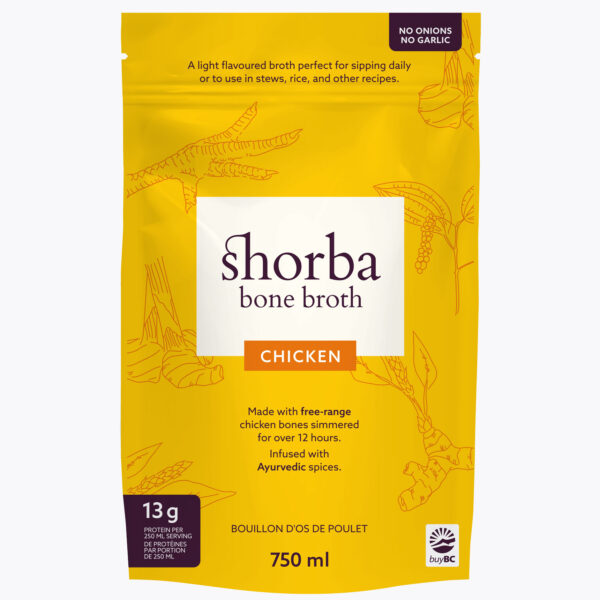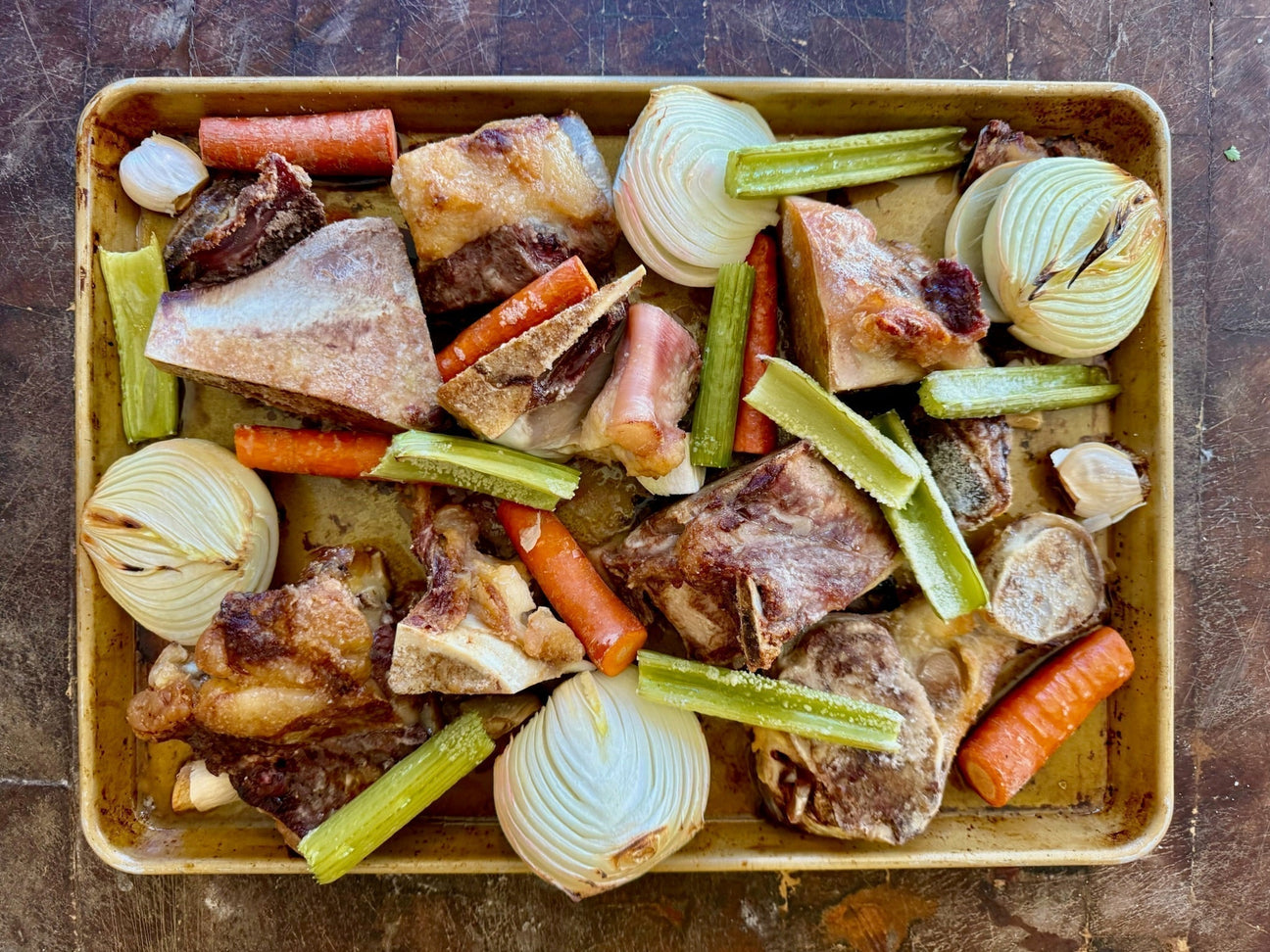Top 7 Benefits of the Best Bone Broths for Joint Support
Exactly How to Make Beef Bone Brew: A Step-by-Step Overview for Delicious Homemade Nutrition
Beef bone broth is a nourishing addition to any cooking area. It uses numerous wellness advantages and can improve a selection of recipes. The process begins with choosing the appropriate bones and components. Understanding each step is essential for attaining the best taste and splendor. Numerous home cooks ignore essential strategies that can boost their brew. What are these techniques, and how can they change a simple brew into a cooking staple?
Recognizing the Benefits of Beef Bone Brew
While many individuals enjoy the rich taste of beef bone brew, they might not completely appreciate its numerous health and wellness advantages. This beneficial elixir is known for its high collagen content, which sustains joint health and promotes skin elasticity. The amino acids found in bone brew, such as glycine and proline, play significant functions in muscle mass repair work and digestive system health and wellness. In enhancement, it is abundant in minerals like magnesium, calcium, and phosphorus, crucial for preserving solid bones and general health. Bone broth additionally possesses anti-inflammatory residential or commercial properties, which can minimize symptoms connected with persistent conditions. Eating it may support digestive tract health by enhancing the mucosal cellular lining of the digestion system, promoting much better nutrient absorption. The warmth and comfort of a steaming bowl of broth can supply a soothing result, making it a delicious and nourishing selection for people seeking both cooking pleasure and health and wellness benefits.
Selecting the Right Bones
The structure of a healthy and tasty beef bone brew hinges on the option of bones. For perfect outcomes, it is important to pick a variety of bones that offer a rich blend of flavor and nutrients. Marrow bones, which include the fatty, gelatinlike marrow, are especially valued for their ability to enhance the broth's splendor. Joint bones, such as knuckles and oxtails, are likewise advantageous because they are high in collagen, adding to a silky texture. Furthermore, consisting of some meaty bones can include depth to the flavor profile. Sourcing bones from grass-fed or pasture-raised livestock is suggested, as these choices often tend to use remarkable quality and preference. It is likewise crucial to identify the bones are free and fresh from any repulsive odors. By carefully choosing the appropriate bones, one can lay the groundwork for a tasty and beneficial beef bone broth.
Important Components for Flavorful Broth
To create a flavorful beef bone brew, picking high quality beef bones is vital as they serve as the foundation of the meal - Bone Broth Vancouver. Aromatic veggies and a cautious selection of flavors and herbs even more improve the broth's deepness and complexity. Together, these crucial active ingredients add to a rich and rewarding flavor account
Top Quality Beef Bones
Quality beef bones work as the structure for a rich and flavorful broth. The ideal alternatives consist of marrow bones, knuckle bones, and oxtails, each contributing distinct textures and tastes. Marrow bones are prized for their gelatin content, which aids create a smooth mouthfeel. Knuckle bones, rich in collagen, boost the broth's body and dietary account. Oxtails provide a passionate preference and additional richness. It is crucial to source bones from pasture-raised or grass-fed livestock, as this enhances the overall top quality and taste of the brew. Freshness is additionally crucial; bones need to be utilized within a couple of days of acquisition or frozen for later usage. Choosing premium beef bones guarantees a scrumptious and nourishing last item.
Fragrant Vegetables Choice
While choosing fragrant veggies, one need to consider the role they play in boosting the total taste profile of the beef bone brew. Typical options include onions, carrots, and celery, frequently described as the "mirepoix." Onions include sweetness and depth, while carrots add a subtle earthiness. Celery gives a rejuvenating clarity that stabilizes the richness of the brew. Garlic, though optional, can present a robust flavor, complementing the mouthwatering notes of the beef. Leeks and shallots are also exceptional additions, using one-of-a-kind taste measurements. For a tip of warmth and intricacy, some might consist of ginger or fennel. Picking a combination of these aromatic veggies guarantees a savory and versatile broth, setting the foundation for a nourishing culinary experience.
Flavorful Herbs and Spices
Integrating delicious natural herbs and seasonings is necessary for boosting the preference of beef bone broth, as they present fragrant complexity and depth. Common choices include bay leaves, which impart a subtle herbal note, and thyme, understood for its earthy flavor. Rosemary, with its pine-like essence, adds a revitalizing touch, while parsley adds illumination and quality. For a tip of heat, black peppercorns and garlic are excellent enhancements, improving the broth's total richness. Additionally, pepper flakes or chili powder can introduce a gentle warmth for those who like a little bit of spice. Picking a well balanced mix of these components not only enhances taste but likewise instills the broth with valuable nutrients, making it a nourishing and tasty alternative for any meal.
Preparing the Bones and Vegetables
To create a tasty and abundant beef bone broth, the preparation of bones and vegetables is necessary. First, selecting high-quality beef bones, such as knuckle, oxtail, or marrow, is important, as they offer the required collagen and nutrients. Toasting the bones in the stove enhances their flavor, offering the broth a much deeper, richer preference. It is recommended to roast them at 400 ° F review for concerning half an hour, until browned.Next, vegetables play a critical duty in structure flavor. Usual options include onions, carrots, and celery, recognized as the mirepoix base. These must be approximately sliced to make best use of taste extraction during simmering. Garlic and tomatoes can also be included for additional depth.Lastly, rinsing the veggies and bones under cool water assists eliminate any kind of pollutants, guaranteeing a clear brew. Properly preparing vegetables and bones establishes the foundation for a beneficial and tasty beef bone broth.
Food Preparation Approaches: Stovetop vs. Slow Cooker
The selection in between stovetop and sluggish stove methods provides distinct advantages when it comes to cooking beef bone brew. Stovetop cooking allows for quicker outcomes and more control over the simmering process, while sluggish stoves use convenience and a prolonged mixture of flavors. Each approach has its unique advantages, satisfying various preferences and routines.

Stovetop Cooking Conveniences
While both stovetop and slow-moving cooker methods have their qualities, stovetop food preparation supplies unique advantages that can boost the process of making beef bone broth. One significant benefit is the capability to regulate the temperature and simmering time much more specifically, which can lead to suitable removal of nutrients and tastes from the bones. Additionally, stovetop food preparation permits real-time changes, making it possible for the chef to keep an eye on the broth's consistency and taste throughout the procedure. The quicker food preparation time contrasted to reduce stoves can also be helpful for those requiring broth in a much shorter duration. In addition, the stovetop approach urges a hands-on strategy, fostering a deeper link to the food preparation process and possibly leading to a much more savory end product.
Slow Cooker Advantages
Utilizing a slow stove for making beef bone brew supplies numerous distinct advantages that attract several home chefs. One main advantage is the ease of set-it-and-forget-it food preparation. Once the ingredients are integrated, the slow stove can operate ignored for hours, enabling an active schedule without consistent monitoring. In addition, slow-moving cookers keep a constant reduced temperature level, which extracts nutrients and flavors properly in time without the danger of boiling, resulting in a richer broth. The energy effectiveness of sluggish cookers also sticks out, as they utilize much less electricity contrasted to stovetops (Beef Bone Broth). In addition, slow-moving cookers usually have programmable setups, allowing exact control over cooking times, which boosts the overall convenience of brew prep work
Straining and Keeping Your Brew
Straining and saving beef bone brew is a vital action that guarantees a clear, tasty final item. When the brew has actually simmered for the recommended time, it needs to be thoroughly put through a fine mesh strainer or cheesecloth into a big dish or pot. This procedure gets rid of any type of solids, such as meat, vegetables, and bones, assuring a smooth uniformity. To capture every little bit of flavor, pressing the solids delicately with a spoon can be beneficial.After stressing, the brew needs to cool to space temperature level prior to being saved. It is best to use airtight containers, such as glass jars or freezer-safe bags, to stop fridge freezer maintain and burn quality. Classifying the containers with the day is additionally recommended. The brew can be refrigerated for up to a week or frozen for numerous months, making it a practical addition to future meals. Proper storage guarantees that the dietary benefits and flavors remain undamaged.
Imaginative Ways to Utilize Beef Bone Brew
Beef bone brew supplies a flexible structure for a range of recipes, boosting both taste and nutrition. Home cooks can incorporate it right into soups and stews, offering a rich base that deepens the general preference. It can additionally be used as a cooking fluid for grains, such as rice or quinoa, infusing them with added nutrients and flavor.Additionally, beef bone broth works as an excellent foundation for sauces and gravies, providing complexity and richness to meals. For those looking for a healthy beverage, sipping cozy brew can be nourishing and relaxing. It can even be utilized in healthy smoothies for a protein increase, though this might call for some creative taste explanation balancing.Ultimately, beef bone brew not only raises day-to-day dishes but also adds to a wholesome diet regimen, making it a staple component for culinary enthusiasts and health-conscious individuals alike.
Regularly Asked Inquiries
The Length Of Time Can I Shop Beef Bone Brew in the Refrigerator?
The question of storage space duration for beef bone brew in the refrigerator is essential. Commonly, it can be securely kept for concerning three to 5 days, making certain quality and top quality prior to usage or cold for longer conservation.
Can I Freeze Beef Bone Broth, and for How much time?
Beef bone brew can be frozen successfully, permitting extended storage space. When effectively secured in airtight containers, it can last approximately six months in the freezer, protecting its flavor and dietary benefits for later use.
Is It Safe to Utilize Bones From a Food Store?
The safety and security of using grocery store bones relies on their source and handling. If appropriately sourced and stored, these bones can be safe for consumption, offering necessary nutrients when ready properly for brew.
Can I Make Beef Bone Brew in an Instantaneous Pot?
The Immediate Pot is certainly suitable for making beef bone broth - view publisher site Bone Broth Near Me. Its pressure cooking attribute substantially decreases cooking time while still extracting rich flavors and nutrients, making it a hassle-free choice for hectic home chefs

What Nutritional Distinctions Exist Between Beef and Poultry Bone Brew?
The nutritional differences in between beef and hen bone broth mostly depend on their collagen web content, amino acids, and mineral profiles. Beef brew typically contains even more collagen and minerals, while poultry broth is often lighter and much easier to absorb. The structure of a healthy and delicious beef bone broth lies in the selection of bones. To create a flavorful beef bone brew, selecting high quality beef bones is vital as they serve as the structure of the recipe. The best alternatives include marrow bones, knuckle bones, and oxtails, each contributing special structures and flavors. While selecting fragrant veggies, one have to consider the role they play in improving the overall taste account of the beef bone broth. To develop a tasty and rich beef bone broth, the prep work of veggies and bones is necessary.